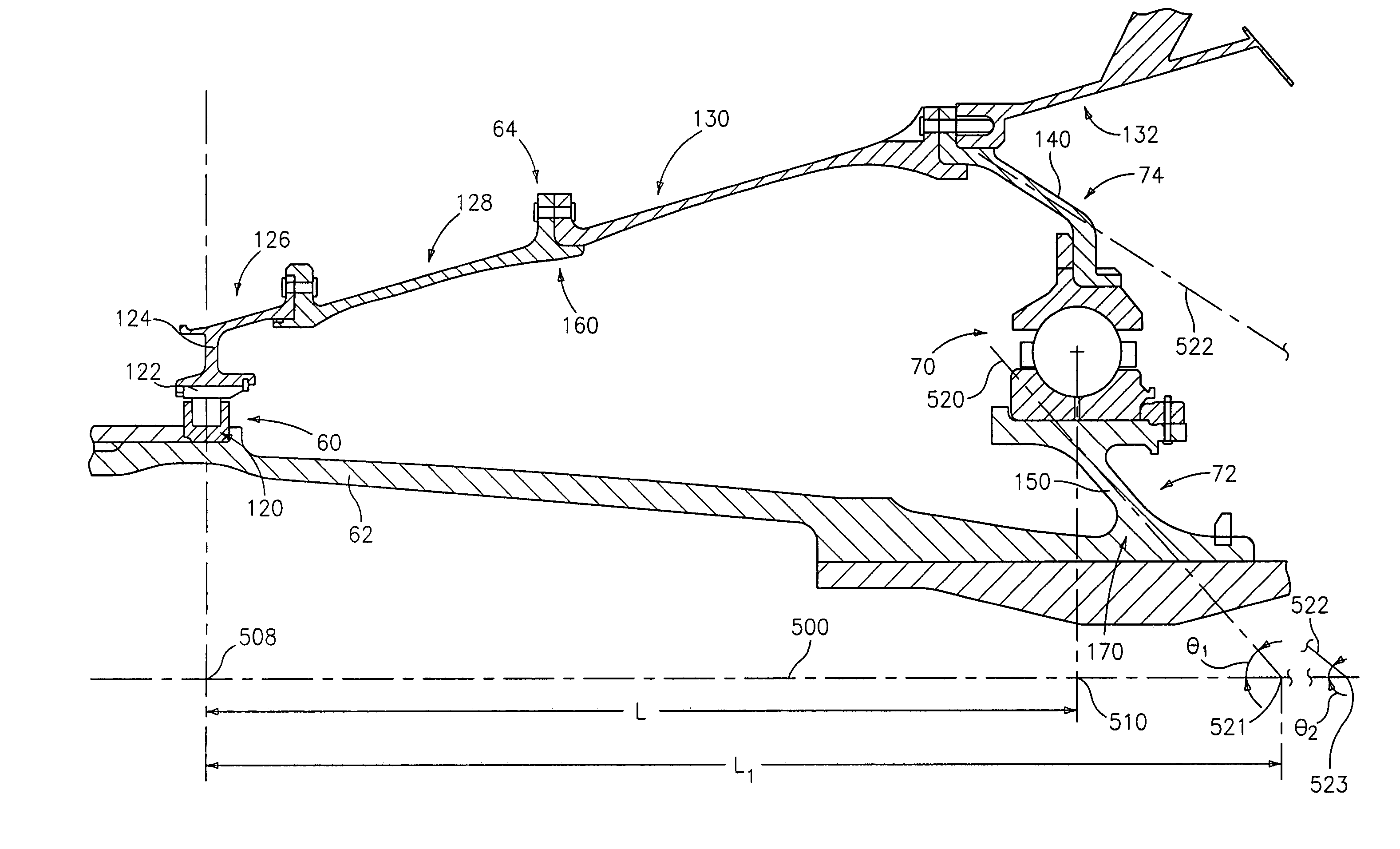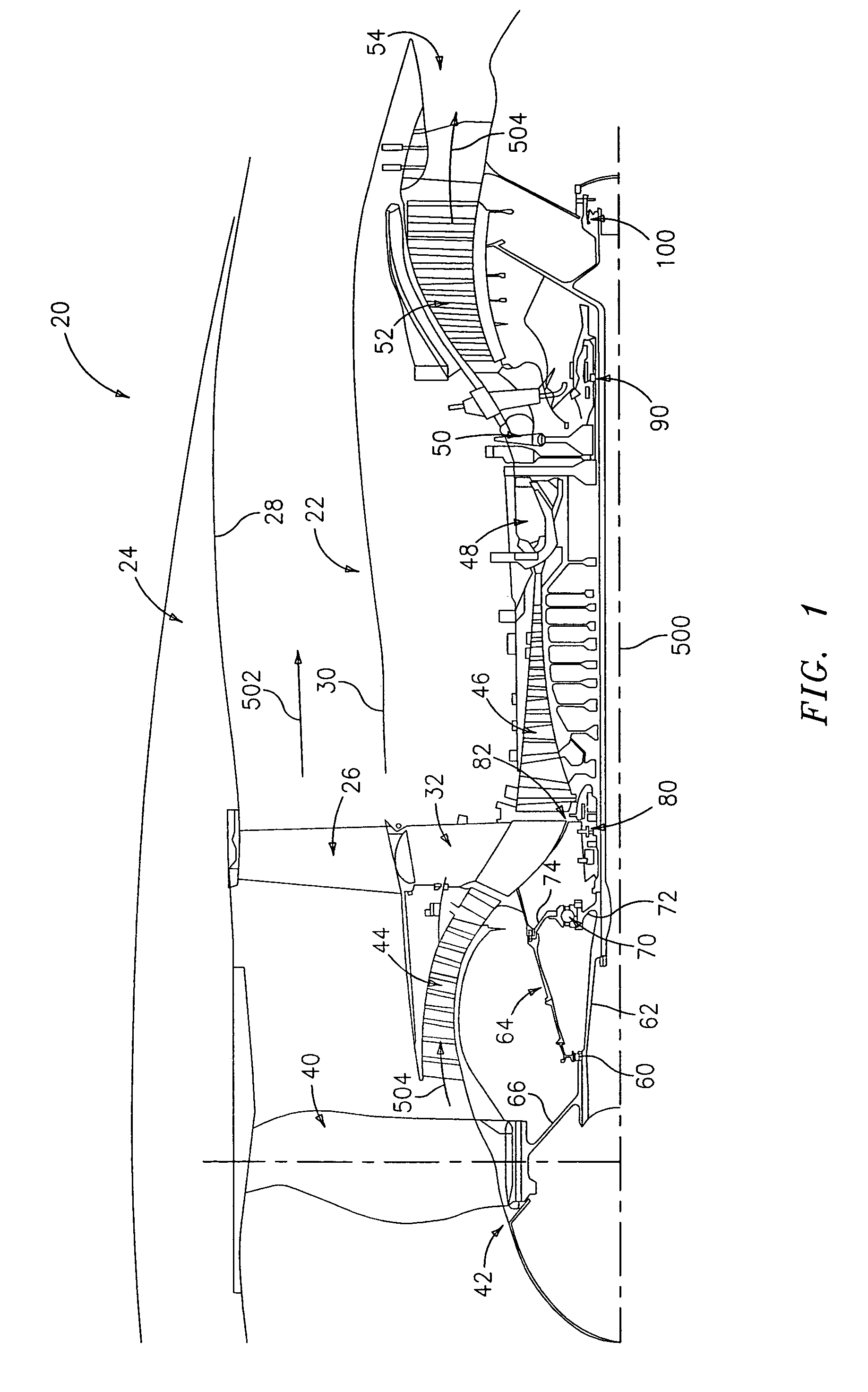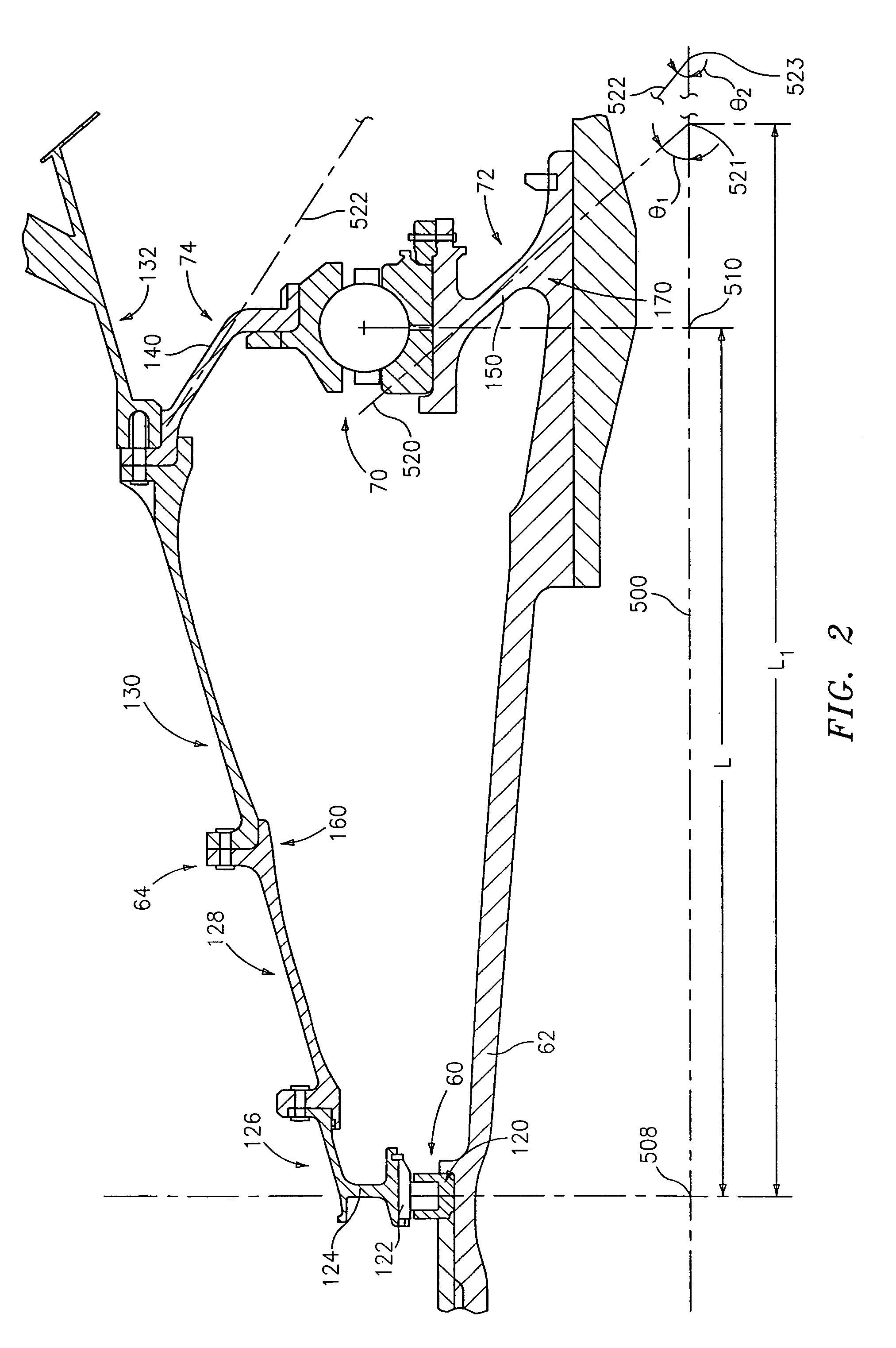Bearing support
a technology of bearings and supports, applied in the direction of bearing unit rigid supports, turbine/propulsion lubrication, liquid fuel engine components, etc., can solve the problems of normal and abnormal loading of bearing systems, imbalance of associated rotors, and inability to spool down
- Summary
- Abstract
- Description
- Claims
- Application Information
AI Technical Summary
Benefits of technology
Problems solved by technology
Method used
Image
Examples
Embodiment Construction
[0021]FIG. 1 shows an exemplary turbofan engine 20 having a central longitudinal axis or engine centerline 500. The engine includes a core 22 mounted within a nacelle 24 with a generally annular bypass flowpath 502 therebetween. The core is supported relative to the nacelle by a circumferential array of struts 26 extending between a nacelle inner surface 28 and a core outer surface 30. The struts 26 are supported on a strut hub 32 of a core non-rotating engine case structure.
[0022]The bypass flowpath 502 extends downstream from a fan having a number of blades 40 on a hub 42. In the exemplary embodiment, the fan is mounted on the low speed spool of a two-spool system. Downstream from the fan along the core flowpath 504 is a low speed / pressure compressor section 44 whose blades are on the low speed spool. Further downstream is a high speed / pressure compressor section 46 whose blades are on the high speed spool. Further downstream is a combustor 48. Further downstream is a high speed / p...
PUM
 Login to View More
Login to View More Abstract
Description
Claims
Application Information
 Login to View More
Login to View More - R&D
- Intellectual Property
- Life Sciences
- Materials
- Tech Scout
- Unparalleled Data Quality
- Higher Quality Content
- 60% Fewer Hallucinations
Browse by: Latest US Patents, China's latest patents, Technical Efficacy Thesaurus, Application Domain, Technology Topic, Popular Technical Reports.
© 2025 PatSnap. All rights reserved.Legal|Privacy policy|Modern Slavery Act Transparency Statement|Sitemap|About US| Contact US: help@patsnap.com



